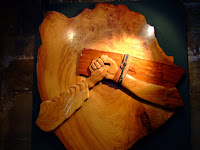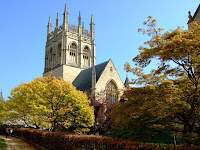 The ‘experts’ were predicting the busiest bank Holiday ever, with papers reporting numbers like 18 million vehicles on the roads, an extra 1.8bn miles being travelled, traffic up by 150%, gridlock all round, etc, etc, so it was an early start on Saturday morning to avoid the crowds.
The ‘experts’ were predicting the busiest bank Holiday ever, with papers reporting numbers like 18 million vehicles on the roads, an extra 1.8bn miles being travelled, traffic up by 150%, gridlock all round, etc, etc, so it was an early start on Saturday morning to avoid the crowds. The big advantage London has for Bank Holidays is that you can exit London to just about any point on the compass, thus the traffic load is spread. Obviously if it is a beautiful day and you decide to go to the coast along with the majority, you will be caught in the traffic queues. We didn’t; we headed for the castles and gardens of Wales on, what turned out to be, the best day of the weekend.
The big advantage London has for Bank Holidays is that you can exit London to just about any point on the compass, thus the traffic load is spread. Obviously if it is a beautiful day and you decide to go to the coast along with the majority, you will be caught in the traffic queues. We didn’t; we headed for the castles and gardens of Wales on, what turned out to be, the best day of the weekend.The first stop was Caerphilly Castle. This is a magnificent castle has several claims to fame:
 the biggest castle in Wales (and second only to Windsor in Britain); large-scale water defences; one of the first truly concentric castles; and a tower that, at 10 degrees, out-leans Pisa. Built in C13th it is now a beautiful tranquil spot, the only hint of a turbulent history is a set of replica war machines.
the biggest castle in Wales (and second only to Windsor in Britain); large-scale water defences; one of the first truly concentric castles; and a tower that, at 10 degrees, out-leans Pisa. Built in C13th it is now a beautiful tranquil spot, the only hint of a turbulent history is a set of replica war machines.We then travelled further west to visit Carreg Cennen, a romantic ruin, perched in an amazing spot, high on a cliff top; wonderfully defendable, as it would be very easy to see the enemy approaching. This was the first of a string of Edward I castles we were to visit on this trip.
 On the other side of the picturesque village of Llandeilo we visited Dinefwr Castle, made into a romantic ruin in the 18th century as a garden feature for the recently re-opened Newton House.
On the other side of the picturesque village of Llandeilo we visited Dinefwr Castle, made into a romantic ruin in the 18th century as a garden feature for the recently re-opened Newton House. As a break from castles we revisited the recent theme of rhododendrons by visiting Colby Woodland Garden. Although described as “One of the best collections of rhododendrons and azaleas in Wales” it did not match last week’s beautiful gardens at Bowood, or Bodnant, the gardens we were to visit on Tuesday. Nevertheless, it was a tranquil valley to explore.
As a break from castles we revisited the recent theme of rhododendrons by visiting Colby Woodland Garden. Although described as “One of the best collections of rhododendrons and azaleas in Wales” it did not match last week’s beautiful gardens at Bowood, or Bodnant, the gardens we were to visit on Tuesday. Nevertheless, it was a tranquil valley to explore. The final stop was Laugharne to visit another a ruined castle. The tower gives a great view over the town and coast. The town is best know for it’s association with Dylan Thomas as he lived and wrote here. His ‘Boat House’ is just around the cliff from the castle and the walk between takes you past the ‘garage’ he used while writing. The village church is very beautiful, and a simple white cross marks his grave.
The final stop was Laugharne to visit another a ruined castle. The tower gives a great view over the town and coast. The town is best know for it’s association with Dylan Thomas as he lived and wrote here. His ‘Boat House’ is just around the cliff from the castle and the walk between takes you past the ‘garage’ he used while writing. The village church is very beautiful, and a simple white cross marks his grave.












































